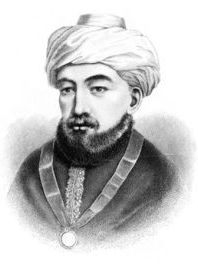On this day in the year known as 1752 AD -- to those that count that way -- Britain and her colonies (which included the US at the time) adopted the Gregorian calendar. This week also marked New Year celebrations of
Rosh Hashanah for Jews (year AM 5779). And a Lyft driver told me this week that he was celebrating Ethiopian New Year, which is called
Enkutatash (year 2011, although I feel certain he told me a year in the 4000's). With all these calendar differences converging in one week, it begs the question from my little desk, set snugly in 2018 CE: with one earth, one moon and one sun, why do we have SO many different calendaring systems?
As it turns out, the answer comes down mostly to a bit of religion and a whole lot of politics:
 |
| A Christian Church in Ethiopia |
Enkutatash occurs every year on September 11th. My Lyft driver inspired me to research the calendar he referred to, which is known simply as the
Ethiopian calendar. It is a solar calendar, having a uniform twelve months of 30 days, and then one final month of 5-6 days, depending on leap year. This calendaring system has the same roots as the Gregorian calendar we use, but differs almost entirely due to non-acceptance of the year Jesus was born, which is the baseline marker for both systems. This discrepancy places calculation of years some
7-8 years behind our calendar.
I'm not going to lie though, he sold me on this system. It's uniform, easy to figure out, and it just makes sense. And his
salesmanship on Ethiopia didn't stop there.
They also have a related clock system, which marks 12 hours between sunrise and sunset all through the year (I frankly still do not understand how this is possible). My driver said that in Ethiopia, "Good Morning" is not said until sunrise (which is 1 o'clock their time), "Good Evening" or "Good Night" is said only after sunset, which would only be after the next 12 hour cycle begins.
 |
Maimonides, the Rabbi who
named the current Hebrew epoch |
Rosh Hashanah is basically Jewish New Year, except it has more religious implications than the Gregorian New Year on December 31st. This holiday follows a calendar system that cycles, and therefore it is not on the same day every year.
The present
Hebrew calendar has been an evolution, with diverse influences including even Babylonian. It is a lunisolar calendar that I couldn't begin to document here as it shifts greatly between the solar and lunar years to determine religious holidays, AND IT IS REALLY CONFUSING! According to this calendaring system, we are currently in the Anno Mundi (AM) epoch, adopted in 1178 CE (by the Gregorian calendar). The documented AM year is intended to count from the creation of the world, to today; and so to their count, the Earth is some 5700 years old.
In this calendaring system:
- the length of days are not fixed
- there are 7 days in the week always, however the number of weeks in the year are not fixed
- there are typically 12 months except in leap years, in which there are 13
- the zodiac also plays a significant role in the calculation of the calendar, and although the constellations are named differently, they represent relatively the same cycles that are used to predict your horoscope in the paper
 |
| Pope Gregory XIII |
The
Gregorian calendar is a solar calendar with 12 months of varying days, regularly occurring every year, including the leap year cycle which attempts to correct for the missing 5+ hours every year that is not accounted for in normal year. It is a reform of the Julian calendar, instituted by
Pope Gregory XIII in 1582 CE.
Critics of the system cite issue with the uneven and sometimes irregular days per month, the illogical names of the months, the difficulty users find in calculating intervals between dates as a result, and view its imposed usage as a form of occupation from the West. It took until the 1900's to be fully adopted across Europe, and in the course of that time, loads of misrepresented dates were documented and we skipped 10 days (or more) in the process.





